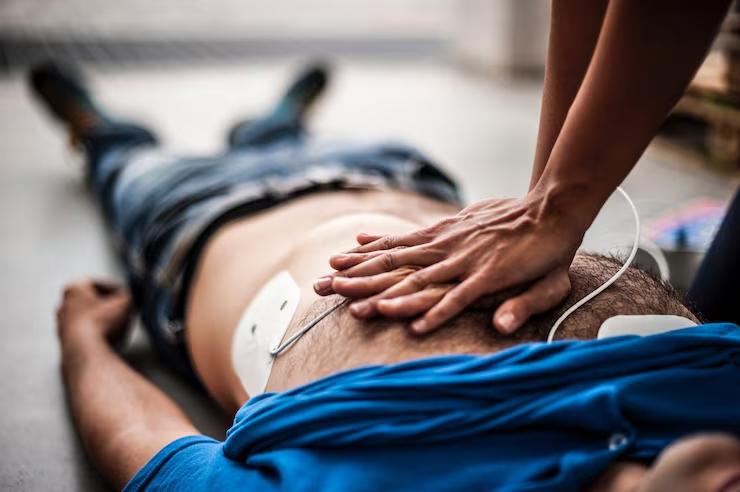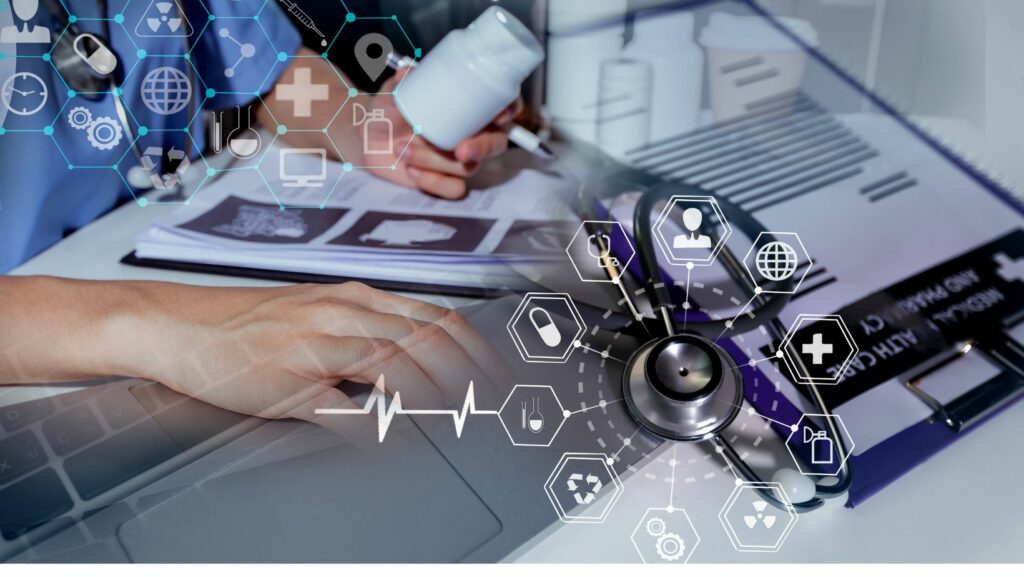It’s a routine chronic-care follow-up over video: The patient is at home with a caregiver, you’re reviewing meds and breathing rate, and everything seems stable, until their speech slows and the camera slips. This shows how a simple check-in can become an emergency that you must lead from miles away.
For many telehealth and remote-care teams, that moment prompts the same concern: am I ready to recognize arrest early, direct bystander CPR, and coordinate AED use and EMS without being in the room? This guide shows how to align BLS with remote workflows. By the end, you’ll know exactly what to train, how to certify, and how to adapt BLS for modern telehealth, so you can act fast and feel ready during an emergency.
What Is BLS Certification?
BLS stands for Basic Life Support. It is a course that teaches healthcare providers and caregivers the practical skills they need to help someone in an urgent medical condition. The goal is to give professionals the skills to step in and help someone until further medical support arrives. A standard BLS course covers a variety of important techniques:
- Identify when someone may need help
- Refresh skills for cardiac arrest situations
- Performing chest compressions
- Providing rescue breaths
- Using an automated external defibrillator
- Practice the Heimlich maneuver for choking
- Review airway management and bag-valve-mask ventilation techniques
The course is built around the goal of keeping the person alive until advanced medical help arrives. BLS training continues to grow in importance across healthcare settings. According to a 2025 Red Cross survey, since 2016, approximately 3.6 million individuals have been trained in BLS and other healthcare programs. This shows how many people are learning BLS and other healthcare skills. Staying trained helps providers feel ready and makes care safer for the people they help.
Who Are Telehealth & Remote Care Providers?
Telehealth and remote care providers are healthcare workers who help and guide patients using technology, without being physically present in the room. They connect with patients using video calls, phone calls, messages, and remote monitoring devices to check on health, give advice, and guide treatment. They may work from hospitals, clinics, or their own homes and connect with patients in different cities, states, or even countries.
Telehealth and remote care are becoming a bigger part of healthcare every year. According to a recent analysis by the National Health Institute, telehealth now makes up about 23% of all healthcare visits nationwide, with some specialties seeing more than half of their appointments done virtually. This increase highlights the importance of a BLS certificate for providers who may need to guide patients or caregivers through urgent situations while interacting remotely.
Who Needs BLS Certification In Telehealth & Remote Care
In telehealth and remote care, anyone who works with patients needs to be ready for unexpected situations. Even from a distance, providers guide patients or family members through steps that require proper instructions and clear judgment. BLS training gives them the knowledge and confidence to handle these situations effectively.
The following are the roles that benefit from BLS training in telehealth and remote care:
- Doctors: Doctors offering virtual consultations should be able to spot warning signs and guide patients or caregivers clearly when something urgent happens.
- Nurses: Remote nurses keep track of patients’ health and check in regularly. BLS training helps them guide patients or caregivers when urgent help is needed.
- Allied Health Professionals: Physiotherapists, dietitians, and mental health counselors may face situations where basic life support knowledge is necessary for patient safety.
- Telehealth Support Staff: Sometimes, when doctors or nurses are busy or not immediately available, support staff can give initial guidance to patients virtually until professional help is available.
- Coordinators: Telehealth coordinators handle scheduling and communication may assist in urgent guidance during remote sessions.
Anyone working with patients remotely can benefit from BLS training. It gives them the skills and confidence to offer reliable guidance whenever unexpected situations come up.

Importance of BLS in Telehealth & Remote Care
Providing care remotely comes with its own challenges. Telehealth and remote care providers rely heavily on technology, including electronic health records, remote diagnostic devices, and secure communication platforms. Sometimes a patient’s condition can change unexpectedly, and the provider has to respond quickly from a distance. Knowing the right skills helps professionals give clear instructions and support. It also makes sure the care process stays steady, even when they are not there in person.
These are the following ways BLS training plays an important role in telehealth and remote care:
1. Quick Response Guidance
Providers can guide patients or family members step by step in urgent situations. They show exactly what to do to help the patient stay stable until further help comes.
2. Confidence During Virtual Consultations
Knowing these skills helps providers stay calm and handle the situation step by step. It also helps patients feel more secure and guided, even from a distance. This steady approach allows providers to explain what to do clearly. Patients are more likely to follow instructions correctly, which improves the overall outcome.
3. Improving Patient Safety
With the right training, providers can spot warning signs quickly and tell patients or caregivers what to do. This helps make the home environment safer and gives everyone more confidence.
4. Professional Preparedness
Ongoing training ensures that providers are ready for unexpected situations. It strengthens their ability to deliver consistent care and improves overall service quality in remote healthcare.
How a BLS Certification Helps
A BLS certificate gives healthcare professionals practical skills they can use in real situations. It helps them stay calm, think clearly, and take the right steps when care is needed quickly. Using these skills regularly helps providers act with confidence and stay focused. The training also gives them a strong base to handle care smoothly, whether in a clinic, hospital, or while guiding patients remotely.
The following ways show how a BLS certification helps:
- Having a BLS certificate lets others know the provider has proper training and keeps their skills up to date.
- The training shows step-by-step ways to handle urgent situations, helping providers think clearly and act without hesitation.
- Providers practice working together with colleagues or caregivers, making sure everyone understands what to do when helping a patient.
- The training teaches providers to follow each step correctly and use equipment safely, which helps keep care consistent and reliable.
- BLS courses motivate professionals to stay updated with techniques, guidelines, and new tools in emergency support.
Importance of Choosing the Right Provider
The place you choose for training can make a bigger difference than you may realize. The right provider not only gives you skills but also makes sure your certification is valid and respected.
Here is why it is important to choose the right provider:
- A certificate only holds value if it is recognized by employers or healthcare organizations. Without this, your time and effort could be wasted.
- The quality of teaching affects how well you understand and apply each skill. A reliable provider focuses on making the lessons clear and practical.
- Trusted providers keep their courses aligned with the latest ECC standards. This ensures what you learn is both safe and effective.
- Choosing the wrong provider can leave gaps in your skills, which may make it harder to act quickly when an emergency occurs.
- Learning with experienced, supportive instructors gives you the confidence to act during emergencies. When you know your skills are strong, you feel prepared to handle any emergency.
Get Your BLS Certification Today
A BLS certificate helps providers act with confidence while caring for patients in person or guiding them remotely. Telehealth and remote care professionals learn practical steps they can explain clearly to patients or caregivers from a distance. The course shows step-by-step techniques and builds confidence to handle situations smoothly.
It also helps you grow as a professional by reinforcing good habits and clear thinking. This training allows you to guide others confidently and stay prepared to respond when help is needed. Ready to boost your skills and confidence in patient care? Enroll in the BLS Training course today.



